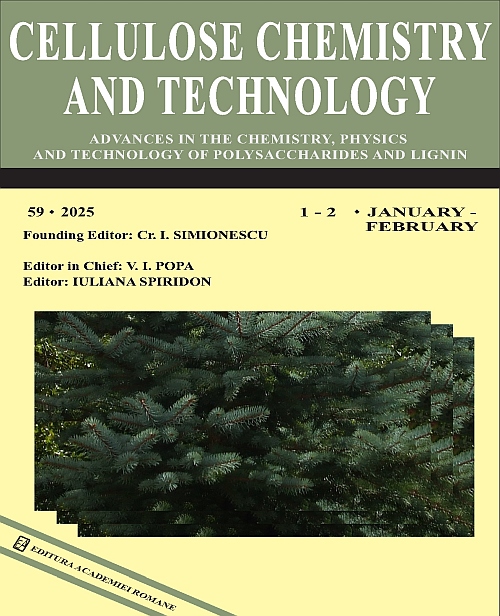|
Title
Assessment of TEMPO-oxidized cellulose nanofibril incorporation on PLGA membrane characteristics for biomedical applications
Authors
YUNIA DWI RAKHMATIA, NOVITRI HASTUTI, ISMADI, VITA MULYA PASSA NOVIANTI, DEBY FAJAR MARDHIAN and ANDI HERMAWAN
Received
February 26, 2025
Published
Volume 59 Issue 7-8 July-August
Keywords
poly(lactic-co-glycolic) acid (PLGA), nanofiber, cellulose, membrane, guided bone regeneration (GBR)
Abstract
Poly(lactic-co-glycolic) acid membranes developed for guided bone regeneration (GBR) in dental care have the
shortcoming of not being rigid enough to withstand soft tissue stress during healing, which may significantly affect the
bone formation process. This study aims to overcome the lack of mechanical properties of poly(lactic-co-glycolic) acid
(PLGA) membranes for GBR by using cellulose nanofibers to reinforce the membranes. The manufacture of cellulose
nanofibers begins with the wood pulping process of oil palm empty fruit bunches (OPEFB) residue. The fibers were
then oxidized using the 2,2,6,6-tetramethylpiperidine-1-oxyl (TEMPO) system at pH 10-11 and mechanically
disintegrated using ultrasonication to produce nano-sized fibers (denoted as TEMPO-oxidized cellulose nanofibers –
TOCNs). The resulting TOCNs were incorporated into PLGA at concentrations of 0.4%, 0.8%, and 1.0% (wt/wt). The
incorporation of TOCNs modified PLGA membranes, increasing surface texture and crystallinity, as confirmed by
SEM, XRD, and FTIR. Membranes thinned with TOCNs addition, with pore size/volume peaking at 0.4% loading
(6.31 nm, 0.23 cm³/g), then reverting towards neat PLGA values at 1.0%. Optimal tensile strength was noted for 0.8%
TOCNs. PLGA-TOCNs composites degraded slower than neat PLGA. The research results are expected to support the
use of renewable natural fibers as reinforcement for PLGA membranes. The TOCNs can effectively modify PLGA
membrane properties, offering potential for tailoring these materials for biomedical applications.
Link
https://doi.org/10.35812/CelluloseChemTechnol.2025.59.70
|



